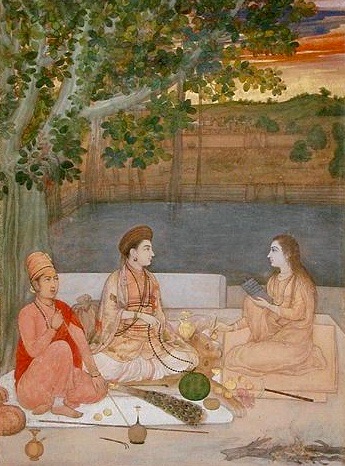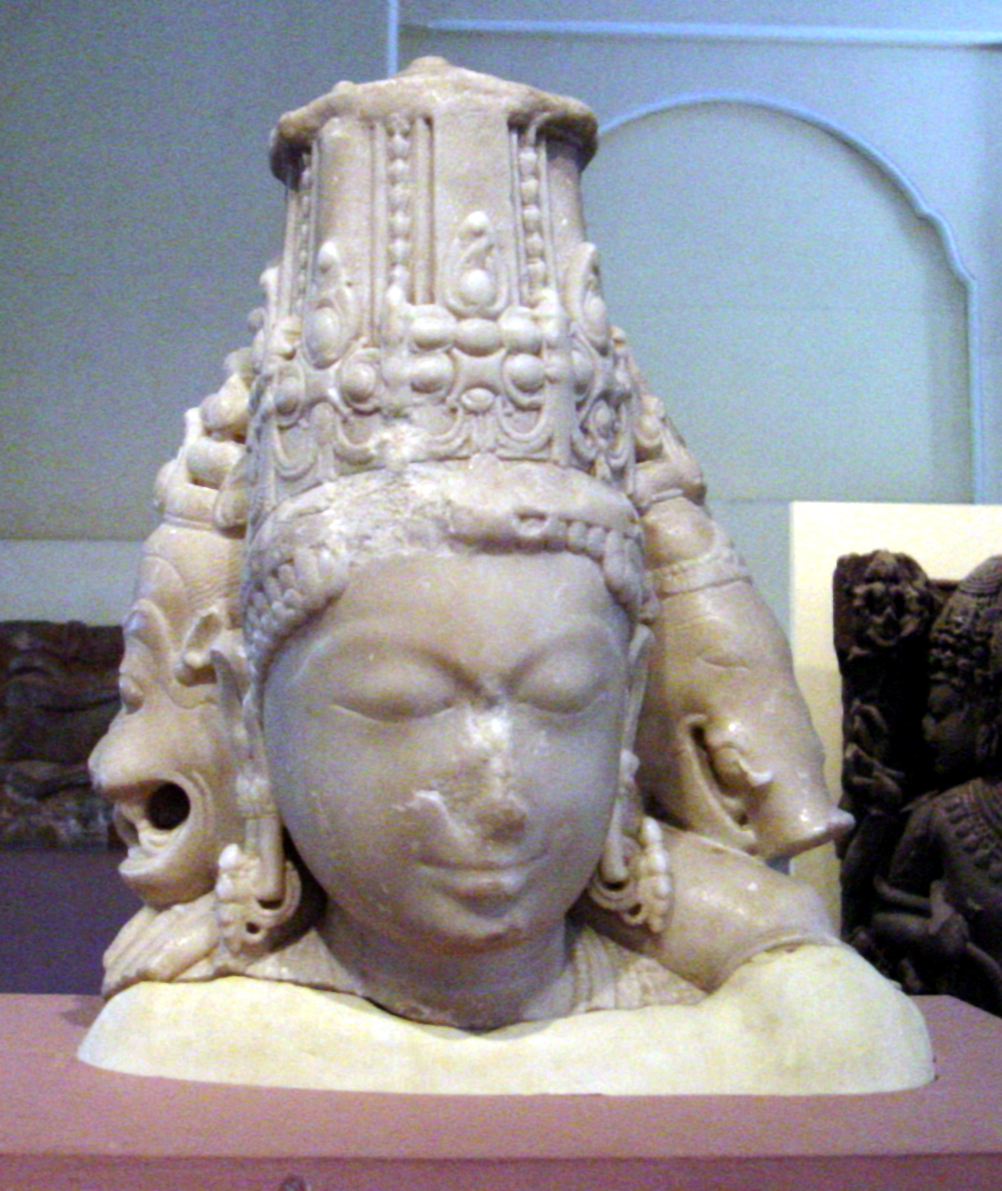|
Acyutananda
''Mahapurusa'' Achyutananda Dasa ( Odia:-''ଅଚ୍ୟୁତାନନ୍ଦ ଦାସ'' ) was a 16th-century poet seer and Vaishnava saint from Odisha, India. He was popularly known as ''Gopala Guru''. He was considered to have the power to see the past, present and future. He was a prolific author, and one of the group of five, that led a revolution in spirituality in Odisha by translating Sanskrit texts into the Odia language for common people. He was one of the famous five friends of spirituality and literature Panchasakha, who translated the ancient Hindu scriptures into Odia, for the people of Odisha. Achyutananda Dasa was the most prolific writer of the Panchasakha and wrote numerous books, many of which could be loosely translated as the Book of Prophecies. He is known as the ''Mahapurusa'' (a Great Person) for his vast knowledge on many subjects such as spirituality, Yoga, rituals, Yantra, Tantra, Ayurveda, and other various shastras. His major works include ''Harivams ... [...More Info...] [...Related Items...] OR: [Wikipedia] [Google] [Baidu] |
Odia Literature
Odia literature is literature written in the Odia language, mostly from the Indian state of Odisha. The modern Odia language is mostly formed from Tadbhava words with significant Sanskrit (Tatsama) influences, along with loanwoards from Desaja, English, Hindustani (Hindi/Urdu), Persian, and Arabic. Its earliest written texts date from around 1000 CE. The earliest Odia newspaper was '' Utkala Deepika'', first published on August 4, 1866. Historians have divided Odia literature into five main stages: Old Odia (800 AD to 1300 AD), Early Medieval Odia (1300 AD to 1500 AD), Medieval Odia (1500 AD to 1700 AD), Late Medieval Odia (1700 AD to 1850 AD) and Modern Odia (1870 AD to present). Further subdivisions, as seen below, more precisely chart the language's development. 4th century BC The creativity and development of the Odia language and literature can be seen in its spoken forms, such as folk tales, and in written forms, such as rock edicts and manuscripts. Songs sung to m ... [...More Info...] [...Related Items...] OR: [Wikipedia] [Google] [Baidu] |
Odia Language
Odia (, ISO: , ; formerly rendered Oriya ) is an Indo-Aryan language spoken in the Indian state of Odisha. It is the official language in Odisha (formerly rendered Orissa), where native speakers make up 82% of the population, and it is also spoken in parts of West Bengal, Jharkhand, Andhra Pradesh and Chhattisgarh. Odia is one of the many official languages of India; it is the official language of Odisha and the second official language of Jharkhand. The language is also spoken by a sizeable population of 700,000 people in Chhattisgarh. Odia is the sixth Indian language to be designated a classical language, on the basis of having a long literary history and not having borrowed extensively from other languages. The earliest known inscription in Odia dates back to the 10th century CE. History Odia is an Eastern Indo-Aryan language belonging to the Indo-Aryan language family. It descends from Odra Prakrit, which evolved from Magadhi Prakrit, which was spoken in east India ... [...More Info...] [...Related Items...] OR: [Wikipedia] [Google] [Baidu] |
Jasobanta Dasa
Jasobanta Dasa (; born ) was an Odia poet, litterateur and mystic. He was one of the five great poets in Odia literature, the Panchasakha during the Bhakti age of literature. He is known for his work ''Prema Bhakti Brahma Gita''. Personal life Early life of Jasobanta is mainly sourced from the work ''Jasobanta Dasanka Chaurashi Agyan'' (Eighty-four arts of Jasobanta Dasa) by one of his disciples Sudarshan Das. He was born at village Adhanga, Jagatsinghpur, part of undivided Cuttack District. His father's name was Jagu Mallika and his mother's name was Rekha Dei. He came to Puri by the inspiration of Sri Chaitanya. He got initiated into Vaishnavism Vaishnavism ( sa, वैष्णवसम्प्रदायः, Vaiṣṇavasampradāyaḥ) is one of the major Hindu denominations along with Shaivism, Shaktism, and Smartism. It is also called Vishnuism since it considers Vishnu as the ... during Srichaitanya's stay in Puri. Literary works A list of his known work ... [...More Info...] [...Related Items...] OR: [Wikipedia] [Google] [Baidu] |
Buddhahood
In Buddhism, Buddha (; Pali, Sanskrit: 𑀩𑀼𑀤𑁆𑀥, बुद्ध), "awakened one", is a title for those who are awake, and have attained nirvana and Buddhahood through their own efforts and insight, without a teacher to point out the dharma (Sanskrit 𑀥𑀭𑁆𑀫; Pali ''dhamma''; "right way of living"). The title is most commonly used for Gautama Buddha, the founder of Buddhism, who is often simply known as "the Buddha". Buddhahood ( sa, 𑀩𑀼𑀤𑁆𑀥𑀢𑁆𑀯, buddhatva; pi, buddhatta or ; ) is the condition and rank of a buddha "awakened one". This highest spiritual state of being is also termed ''sammā-sambodhi'' (skt. samyaksaṃbodhi 'full complete awakening'). The title is also used for other beings who have achieved ''bodhi'' (awakening) and ''moksha'' (release from craving), such as the other human Buddhas who achieved enlightenment before Gautama, the five celestial Buddhas worshiped primarily in Mahayana, and the bodhisattva named M ... [...More Info...] [...Related Items...] OR: [Wikipedia] [Google] [Baidu] |
Jagannatha
Jagannath ( or, ଜଗନ୍ନାଥ, lit=Lord of the Universe, Jagannātha; formerly en, Juggernaut) is a deity worshipped in regional Hinduism, Hindu traditions in India and Bangladesh as part of a triad along with his brother Balarama, Balabhadra, and sister, Subhadra. Jagannath, within Odisha, Odia Hinduism, is the supreme god, ''Purushottama'', and the ''Para Brahman''. To most Vaishnavism, Vaishnava Hindus, particularly the Krishnaism, Krishnaites, Jagannath is an abstract representation of Krishna, or Vishnu, sometimes as the avatar of Krishna or Vishnu. To some Shaivism, Shaiva and Shakta Hindus, he is a symmetry-filled Tantra, tantric form of Bhairava, a fierce manifestation of Shiva associated with annihilation. The Jagannathism ( Odia Vaishnavism) — the particular sector of Jagannath as a major deity — emerged in the Early Middle Ages and later became an independent state regional temple-centered tradition of Krishnaism/Vaishnavism. The idol of Jagannath is a ... [...More Info...] [...Related Items...] OR: [Wikipedia] [Google] [Baidu] |
Natha
Nath, also called Natha, are a Shaiva sub-tradition within Hinduism in India and Nepal. A medieval movement, it combined ideas from Buddhism, Shaivism and Yoga traditions in India.Natha: Indian religious sect Encyclopedia Britannica (2007) The Naths have been a confederation of devotees who consider , as their first lord or , with varying lists of additional gurus. Of these, the 9th or 10th century |
Pancharatra
''Pancharatra'' (IAST: ''Pāñcarātra'') was a religious movement in Hinduism that originated in late 3rd-century BCE around the ideas of Narayana and the various avatars of Vishnu as their central deities.Pancharatra: religious movement Encyclopaedia Britannica The movement later merged with the ancient Bhagavata tradition and contributed to the development of Vaishnavism. The Pancharatra movement created numerous literary treatises in Sanskrit called the ''Pancharatra Samhitas'', and these have been influential Āgama (Hinduism), Agamic texts within the theistic Vaishnava movements.Oriental Institute, Maharaja Sayajirao University of Baroda (1940). Gaekwad Oriental Series, Issue 86, p.7. Literally meani ... [...More Info...] [...Related Items...] OR: [Wikipedia] [Google] [Baidu] |
Vishishtadvaita
Vishishtadvaita (IAST '; sa, विशिष्टाद्वैत) is one of the most popular schools of the Vedanta school of Hindu philosophy. Vedanta literally means the in depth meaning ''of the Vedas.'' ''Vishisht Advaita'' (literally "Advaita means non- Duality") is a non-dualistic school of Vedanta philosophy. It is non-dualism of the qualified whole, in which Brahman alone is seen as the Supreme Reality, but is characterized by multiplicity. It can be described as qualified monism or qualified non-dualism or attributive monism. It is a school of Vedanta philosophy which believes in all diversity subsuming to an underlying unity. Ramanuja, the 11–12th century philosopher and the main proponent of Vishishtadvaita philosophy contends that the Prasthanatrayi ("The three courses"), namely the Upanishads, the Bhagavad Gita, and the Brahma Sutras are to be interpreted in a way that shows this unity in diversity, for any other way would violate their consistency. Vedanta ... [...More Info...] [...Related Items...] OR: [Wikipedia] [Google] [Baidu] |
Ramanuja
Ramanuja (Middle Tamil: Rāmāṉujam; Classical Sanskrit: Rāmanuja; 1017 CE – 1137 CE; ; ), also known as Ramanujacharya, was an Indian Hindu philosopher, guru and a social reformer. He is noted to be one of the most important exponents of the Sri Vaishnavism tradition within Hinduism. His philosophical foundations for devotionalism were influential to the Bhakti movement. Ramanuja's guru was Yadava Prakaasa, Yādava Prakāśa, a scholar who according to tradition belonged to the Advaita Vedanta, Advaita Vedānta tradition, but probably was a Bhedabheda scholar. Sri Vaishnava tradition holds that Ramanuja disagreed with his guru and the non-dualistic Advaita Vedānta, and instead followed in the footsteps of Tamil Alvars, Alvārs tradition, the scholars Nathamuni, Nāthamuni and Yamunacharya, Yamunāchārya. Ramanuja is famous as the chief proponent of Vishishtadvaita subschool of Vedanta, Vedānta, and his disciples were likely authors of texts such as the Shatyayaniya Up ... [...More Info...] [...Related Items...] OR: [Wikipedia] [Google] [Baidu] |
Harivamsa
The ''Harivamsa'' ( , literally "the genealogy of Hari") is an important work of Sanskrit literature, containing 16,374 shlokas, mostly in the '' anustubh'' metre. The text is also known as the ''Harivamsa Purana.'' This text is believed to be a ''khila'' (appendix or supplement) to the MahabharataThe Mahabharata in Sanskrit: Book I: Chapter 2 in sacred-texts.com website and is traditionally ascribed to . The most celebrated commentary of the ''Mahabharata'' by , the ''Bharata Bhava Deepa'' also covers the ''Ha ... [...More Info...] [...Related Items...] OR: [Wikipedia] [Google] [Baidu] |
Bhagavata Purana
The ''Bhagavata Purana'' ( sa, भागवतपुराण; ), also known as the ''Srimad Bhagavatam'', ''Srimad Bhagavata Mahapurana'' or simply ''Bhagavata'', is one of Hinduism's eighteen great Puranas (''Mahapuranas''). Composed in Sanskrit by Veda Vyasa, it promotes ''bhakti'' (devotion) towards Krishna, integrating themes from the Advaita (monism) philosophy of Adi Shankara, the Vishishtadvaita (qualified monism) of Ramanujacharya and the Dvaita (dualism) of Madhvacharya. It is widely available in almost all Indian languages. The ''Bhagavata Purana'', like other puranas, discusses a wide range of topics including cosmology, astronomy, genealogy, geography, legend, music, dance, yoga and culture. As it begins, the forces of evil have won a war between the benevolent ''Deva (Hinduism), devas'' (deities) and evil ''asuras'' (demons) and now rule the universe. Truth re-emerges as Krishna, (called "Hari#Usage in Indian religion and mythology, Hari" and "Vāsudeva" in the ... [...More Info...] [...Related Items...] OR: [Wikipedia] [Google] [Baidu] |
Ramayana
The ''Rāmāyana'' (; sa, रामायणम्, ) is a Sanskrit literature, Sanskrit Indian epic poetry, epic composed over a period of nearly a millennium, with scholars' estimates for the earliest stage of the text ranging from the 8th to 4th centuries BCE, and later stages extending up to the 3rd century CE. ''Ramayana'' is one of the two important epics of Hinduism, the other being the ''Mahabharata, Mahābhārata''. The epic, traditionally ascribed to the Maharishi Valmiki, narrates the life of Sita, the Princess of Janakpur, and Rama, a legendary prince of Ayodhya city in the kingdom of Kosala. The epic follows his fourteen-year exile to the forest urged by his father King Dasharatha, on the request of Rama's stepmother Kaikeyi; his travels across forests in the South Asia, Indian subcontinent with his wife Sita and brother Lakshmana, the kidnapping of Sita by Ravana – the king of Lanka, that resulted in war; and Rama's eventual return to Ayodhya to be crowned kin ... [...More Info...] [...Related Items...] OR: [Wikipedia] [Google] [Baidu] |

.jpeg/1200px-Gandhara_Buddha_(tnm).jpeg)







